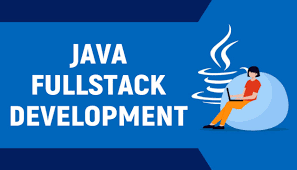Java Full Stack Development encompasses the creation of both the client-facing front-end and the server-side back-end of modern web applications using Java and associated frameworks. This integrated approach allows developers to manage the entire software lifecycle, from UI/UX design to server logic and database operations, making it a critical skill set for U.S. industries facing competitive digital transformation demands.
Java Full Stack Development: Comprehensive Guide with U.S. Industry Use Cases and Strategic Implementation Support
Abstract
Java Full Stack Development encompasses the creation of both the client-facing front-end and the server-side back-end of modern web applications using Java and associated frameworks. This integrated approach allows developers to manage the entire software lifecycle, from UI/UX design to server logic and database operations, making it a critical skill set for U.S. industries facing competitive digital transformation demands.
This paper explores the core technologies, U.S. industry-specific applications, and best practices for Java full stack development. It also explains how KeenComputer.com and IAS-Research.com can help organizations in the U.S. plan, build, and scale Java-based solutions.
1. Introduction
In the U.S. technology market, enterprises and SMEs require end-to-end web solutions that are secure, scalable, and user-friendly. Java, with its decades-long track record of reliability, is a cornerstone of enterprise software. Full stack development using Java combines Spring Boot, Hibernate, and Java EE with modern front-end frameworks such as React.js or Angular, ensuring a unified development pipeline.
The U.S. market’s shift toward cloud-native architectures, microservices, and data-driven decision-making has made full stack Java development not just a technical preference but a strategic necessity.
2. Technical Overview of Java Full Stack Development
2.1 Front-End Development
- Technologies: HTML5, CSS3, JavaScript (ES6+), TypeScript, Angular, React.js, Bootstrap, Material UI.
- Best Practice for U.S. Enterprises: Accessibility compliance per WCAG 2.1 for federal contracts.
- Example Integration: React.js SPA consuming REST APIs from Spring Boot.
2.2 Back-End Development
- Spring Boot: Rapid microservices and REST API development with minimal configuration.
- Spring Security: Enterprise-grade authentication and authorization (supports SSO & OAuth2).
- Hibernate/JPA: ORM for database operations, reducing SQL boilerplate.
- Microservices: Independent deployable units for better scalability.
2.3 Database Layer
- Relational: PostgreSQL, MySQL (high consistency requirements).
- NoSQL: MongoDB, Cassandra (real-time analytics and IoT).
- U.S. Compliance Requirement: HIPAA-compliant storage for healthcare apps, PCI DSS for e-commerce.
2.4 DevOps and Deployment
- CI/CD Tools: Jenkins, GitHub Actions, GitLab CI.
- Containerization: Docker for portability, Kubernetes for orchestration.
- Cloud Providers: AWS, Azure, GCP — all offer U.S.-based data residency options.
3. U.S. Industry Use Cases
3.1 Finance & Banking
Scenario: A Wall Street trading firm requires a high-frequency trading dashboard.
- Solution: Java back-end with Spring Boot for low-latency APIs, Angular front-end for data visualization, WebSockets for live updates.
- Compliance: SEC and FINRA reporting integration.
3.2 Healthcare
Scenario: A hospital network needs a secure telemedicine platform.
- Solution: HIPAA-compliant Spring Boot services with encrypted video conferencing APIs, React.js front-end for patient and doctor portals.
- Benefit: Faster deployment of patient services during public health emergencies.
3.3 E-commerce
Scenario: An online U.S. retail chain scaling for Black Friday sales.
- Solution: Microservices in Spring Boot for product catalog, orders, and payments; Redis caching; React.js UI; AWS auto-scaling.
- Outcome: Stable performance under millions of concurrent sessions.
3.4 Government & Public Sector
Scenario: State government needs a citizen services portal.
- Solution: Java EE backend with Spring Security, Angular front-end, integrated with legacy Oracle systems.
- Compliance: FedRAMP and Section 508 accessibility standards.
4. Best Practices for U.S.-Based Java Full Stack Projects
- Security First: Implement role-based access, OWASP Top 10 protections.
- Scalability Planning: Use horizontal scaling via Kubernetes.
- Testing: Automated unit, integration, and performance tests.
- Monitoring: Integrate with ELK Stack, Prometheus, Grafana.
- Accessibility Compliance: Meet ADA and WCAG requirements.
5. How KeenComputer.com and IAS-Research.com Can Help
KeenComputer.com – Development, Integration, and Business Alignment
- Build custom full stack applications tailored for U.S. industries.
- Integrate with ERP, CRM, and e-commerce platforms.
- Deploy on AWS GovCloud, Azure Government for compliance-heavy sectors.
- Optimize for peak seasonal traffic in retail and logistics.
- Provide on-site and remote developer training for U.S. teams.
IAS-Research.com – Architecture, R&D, and Innovation
- Design enterprise-grade system architectures for U.S. federal and Fortune 500 clients.
- Apply AI and data analytics to Java ecosystems (fraud detection, predictive analytics).
- Research & prototype emerging integrations (IoT, blockchain, digital twins).
- Perform security audits for HIPAA, PCI DSS, and FedRAMP.
- Offer innovation workshops to align Java solutions with long-term digital strategy.
Collaborative Advantage
The joint expertise of KeenComputer.com and IAS-Research.com delivers:
- Faster time-to-market with minimal technical debt.
- Research-driven, future-proof architectures.
- Compliance-ready deployments for U.S. industry regulations.
- Scalable designs prepared for national-level traffic and workloads.
6. Conclusion
Java Full Stack Development is not just a programming discipline—it is an enterprise enabler. For U.S. organizations under competitive and regulatory pressures, the combination of robust Java backend systems with dynamic modern front-ends ensures reliable, scalable, and secure solutions.
With KeenComputer.com delivering expert engineering execution and IAS-Research.com providing cutting-edge architectural guidance, U.S. businesses can accelerate their digital transformation and maintain a sustainable technological edge.
References
- Aloa. “Full Stack Java Developer – A Complete Guide.” https://aloa.co/blog/full-stack-java-developer
- Coursera. “Java Full Stack Specialization.” https://www.coursera.org/specializations/java-fullstack
- Talent500. “Java Full Stack Developer Guide.” https://talent500.com/blog/java-full-stack-developer-guide/
- Metana.io. “Understanding Java Full Stack – A Beginner’s Guide.” https://metana.io/blog/understanding-java-full-stack-a-beginners-guide/
- GeeksforGeeks. “Advanced Java – Full Stack.” https://www.geeksforgeeks.org/advance-java/java-full-stack/
- AWS. “What is Full Stack Development?” https://aws.amazon.com/what-is/full-stack-development/
- Coding Dojo. “Java Full Stack Guide.” https://www.codingdojo.com/blog/java-full-stack-guide
- MongoDB. “Full Stack Development Basics.” https://www.mongodb.com/resources/basics/full-stack-development
- U.S. Department of Health & Human Services. “HIPAA Privacy Rule.” https://www.hhs.gov/hipaa/
- WCAG 2.1 Accessibility Guidelines. https://www.w3.org/WAI/standards-guidelines/wcag/
